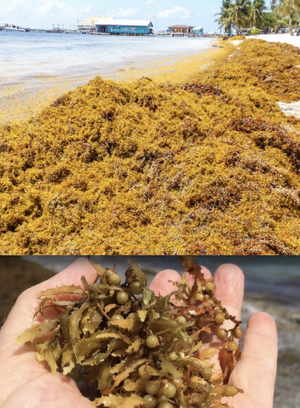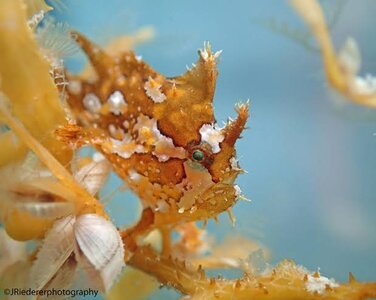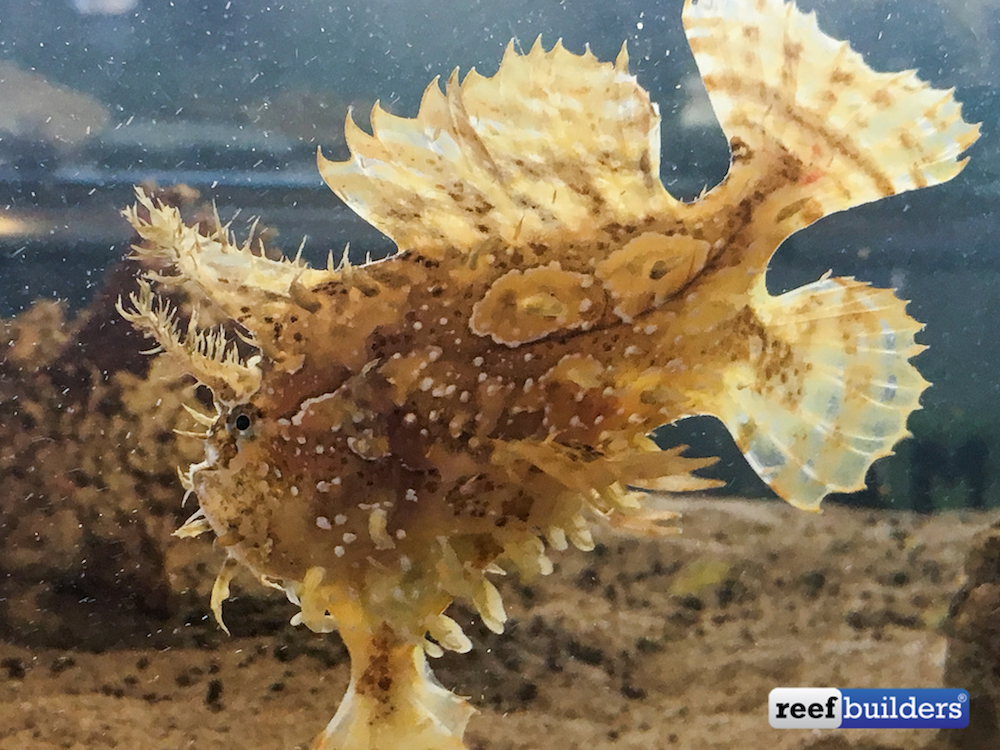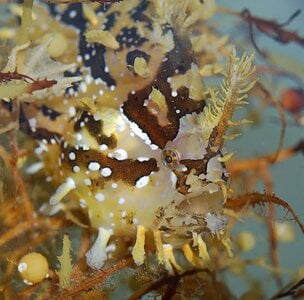- Joined
- Apr 30, 2005
- Messages
- 34,578
Yuck.
This is going to harm tourism.

NYT snip:
By Livia Albeck-Ripka and Emily Schmall
March 14, 2023Updated 4:26 p.m. ET
For much of the year, an enormous brown blob floats, relatively harmlessly, across the Atlantic Ocean. Its tendrils provide shelter and breeding grounds for fish, crabs and sea turtles. Spanning thousands of miles, it is so large that it can be seen from outer space.
But scientists say that in the coming months, the blob — a tangled, buoyant, mass of a type of seaweed called sargassum — is expected to come ashore in Florida and elsewhere along the Gulf of Mexico. No longer will the blob be gentle; scientists say it will then begin to rot, emitting toxic fumes and fouling the region’s beaches over the busiest summer months.
The seaweed, which can also cause pollution and threaten human health as it decays, has already begun to creep onto the shores of Key West, Fla. In Mexico, “excessive” levels of the seaweed were recorded last month choking beaches south of Cancún. Photos and videos from the region show beachgoers wading through the brown muck along usually glistening beaches.
“You can’t get in the water,” Leonard Shea, a travel YouTuber, said in a recent video from the resort town of Playa del Carmen that showed waves lapping beneath a thick blanket of the seaweed. “It’s not an enjoyable experience.”
Sargassum — a type of macroalgae that is naturally abundant in the Sargasso Sea — has long been seen floating in mats across the North Atlantic. But in 2011, scientists began to observe extraordinary accumulations of the seaweed extending in a belt from West Africa to the Caribbean Sea and Gulf of Mexico, according to a 2019 study.
The immense bloom has continued to grow almost every year.
While scientists are still trying to understand exactly why and how the mass, known as the great Atlantic Sargassum belt, is expanding, it appears to be seasonal — coinciding with the discharge of major waterways, including the Congo, Amazon and Mississippi rivers.
The runoff from these sources helps to feed the bloom with nitrogen and phosphorus, said Brian Lapointe, a research professor at Florida Atlantic University, who has spent most of his career studying sargassum. Fossil fuel emissions and the burning of biomass — such as trees after deforestation — also produce nutrients, he added, that could be helping the sargassum to grow.
“These blooms are getting bigger and bigger and this year looks like it’s going to be the biggest year yet on record,” Dr. Lapointe said. In January, scientists measured the largest bloom for that month on record. “This is quite early to see this much, this soon,” he added. “It just doesn’t bode well for a clean beach summer in 2023.”
According to the National Oceanography and Atmospheric Administration, the sargassum blooms will continue to disrupt Caribbean waters into mid-October.
While floating sargassum can benefit marine animals by providing shade and shelter, the problems begin once it comes ashore. As the sargassum begins to die, it degrades the water quality and pollutes beaches, scientists say. It can also choke vital mangrove habitats and suck oxygen out of the water. The decaying algae also releases hydrogen sulfide, a colorless gas that smells like rotten eggs, and can cause respiratory problems in humans.
Last summer, the U.S. Virgin Islands declared a state of emergency, after “unusually high amounts” of sargassum piled up on its shores, affecting a desalination plant on the island of St. Croix. And in 2018, after a mass bloom that sprawled across about 5,500 miles in the Atlantic Ocean, doctors on the Caribbean islands of Guadeloupe and Martinique reported thousands of cases of “acute” exposure to hydrogen sulfide, according to a study published that year.
In the past, besieged beach towns have turned to various measures to rid themselves of sargassum: In Mexico, the navy has been recruited to scoop the seaweed from the ocean, and rake the country’s beaches. Meanwhile, some entrepreneurs have proposed transforming the seaweed into animal feed, fuel or construction materials.
But Dr. Lapointe, the research professor, warned that anyone experimenting with new uses for the seaweed should exercise extreme caution: sargassum contains arsenic, which, if used in fertilizer, could potentially make its way up the food chain.
The most immediate threat, however, is to tourism. “It’s having catastrophic effects,” he said.
This is going to harm tourism.

NYT snip:
A Giant Blob of Seaweed is Heading to Florida
The mass, known as the great Atlantic Sargassum belt, is drifting toward the Gulf of Mexico. Scientists say seaweed is likely to come ashore by summer to create a rotting, stinking, scourge.By Livia Albeck-Ripka and Emily Schmall
March 14, 2023Updated 4:26 p.m. ET
For much of the year, an enormous brown blob floats, relatively harmlessly, across the Atlantic Ocean. Its tendrils provide shelter and breeding grounds for fish, crabs and sea turtles. Spanning thousands of miles, it is so large that it can be seen from outer space.
But scientists say that in the coming months, the blob — a tangled, buoyant, mass of a type of seaweed called sargassum — is expected to come ashore in Florida and elsewhere along the Gulf of Mexico. No longer will the blob be gentle; scientists say it will then begin to rot, emitting toxic fumes and fouling the region’s beaches over the busiest summer months.
The seaweed, which can also cause pollution and threaten human health as it decays, has already begun to creep onto the shores of Key West, Fla. In Mexico, “excessive” levels of the seaweed were recorded last month choking beaches south of Cancún. Photos and videos from the region show beachgoers wading through the brown muck along usually glistening beaches.
“You can’t get in the water,” Leonard Shea, a travel YouTuber, said in a recent video from the resort town of Playa del Carmen that showed waves lapping beneath a thick blanket of the seaweed. “It’s not an enjoyable experience.”
Sargassum — a type of macroalgae that is naturally abundant in the Sargasso Sea — has long been seen floating in mats across the North Atlantic. But in 2011, scientists began to observe extraordinary accumulations of the seaweed extending in a belt from West Africa to the Caribbean Sea and Gulf of Mexico, according to a 2019 study.
The immense bloom has continued to grow almost every year.
While scientists are still trying to understand exactly why and how the mass, known as the great Atlantic Sargassum belt, is expanding, it appears to be seasonal — coinciding with the discharge of major waterways, including the Congo, Amazon and Mississippi rivers.
The runoff from these sources helps to feed the bloom with nitrogen and phosphorus, said Brian Lapointe, a research professor at Florida Atlantic University, who has spent most of his career studying sargassum. Fossil fuel emissions and the burning of biomass — such as trees after deforestation — also produce nutrients, he added, that could be helping the sargassum to grow.
“These blooms are getting bigger and bigger and this year looks like it’s going to be the biggest year yet on record,” Dr. Lapointe said. In January, scientists measured the largest bloom for that month on record. “This is quite early to see this much, this soon,” he added. “It just doesn’t bode well for a clean beach summer in 2023.”
According to the National Oceanography and Atmospheric Administration, the sargassum blooms will continue to disrupt Caribbean waters into mid-October.
While floating sargassum can benefit marine animals by providing shade and shelter, the problems begin once it comes ashore. As the sargassum begins to die, it degrades the water quality and pollutes beaches, scientists say. It can also choke vital mangrove habitats and suck oxygen out of the water. The decaying algae also releases hydrogen sulfide, a colorless gas that smells like rotten eggs, and can cause respiratory problems in humans.
Last summer, the U.S. Virgin Islands declared a state of emergency, after “unusually high amounts” of sargassum piled up on its shores, affecting a desalination plant on the island of St. Croix. And in 2018, after a mass bloom that sprawled across about 5,500 miles in the Atlantic Ocean, doctors on the Caribbean islands of Guadeloupe and Martinique reported thousands of cases of “acute” exposure to hydrogen sulfide, according to a study published that year.
In the past, besieged beach towns have turned to various measures to rid themselves of sargassum: In Mexico, the navy has been recruited to scoop the seaweed from the ocean, and rake the country’s beaches. Meanwhile, some entrepreneurs have proposed transforming the seaweed into animal feed, fuel or construction materials.
But Dr. Lapointe, the research professor, warned that anyone experimenting with new uses for the seaweed should exercise extreme caution: sargassum contains arsenic, which, if used in fertilizer, could potentially make its way up the food chain.
The most immediate threat, however, is to tourism. “It’s having catastrophic effects,” he said.











300x240.png)